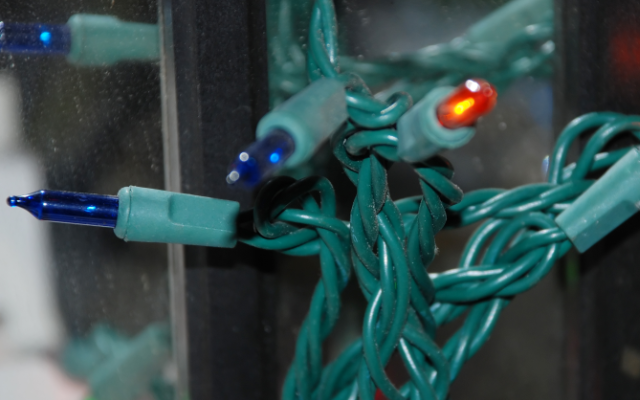Christmas Lights, Without Tripping Breakers
 Holiday lighting may be the world's largest collective ritual involving electrical danger. It's a time when our hearts are filled with testing the limits of our breakers (and our luck) by attempting to pull off great feats of convenience, like plugging 18 strings of lights into a single socket doodad so they can all go on with the flick of a switch. Does this work? Sometimes. Does this cause house fires? Sometimes.
Holiday lighting may be the world's largest collective ritual involving electrical danger. It's a time when our hearts are filled with testing the limits of our breakers (and our luck) by attempting to pull off great feats of convenience, like plugging 18 strings of lights into a single socket doodad so they can all go on with the flick of a switch. Does this work? Sometimes. Does this cause house fires? Sometimes.
So this year, instead of relying on crossed fingers for electrical safety, why not take a slightly more scientific approach? (There's a little bit of math involved, but don't worry; if you have any suspicions about the existence of Santa Claus, you're old enough to do it.)
Preventing an Overload
Since most homes these days are juiced up with 200 amps of electrical power, there's very little chance you can overload your entire system with holiday lights, even if you're one of those nuts who wins the neighborhood contest every year. Therefore, the real question is: How many lights can you plug into a single circuit without overloading it?
Circuit breakers and fuses trip or blow when a circuit is overloaded (which often means overheated, too) or when there's a short somewhere on the circuit, such as when an unlucky squirrel nibbles on a light string or an unlucky homeowner drives a staple through an extension cord. In any case, preventing an overload is one thing you can and should control.
Figuring Circuit Capacity
Every electrical circuit in your house has a total wattage capacity and a recommended, or "safe," capacity. Here's how to find the safe capacity for the circuit where you're plugging in lights:
1. Plug a lamp (or radio) into the outlet where the lights will go, and turn on the lamp.
2. At your home's service panel (breaker/fuse box), try to decipher the electrician's shorthand to determine which breaker (or fuse) serves the outlet. Switch the breaker to the OFF position, then check to see if the lamp went off. If so, you're on the right circuit. If not, turn the breaker back on and try another one.
3. Once you've identified the circuit, check the number on the end of the breaker switch; it should be 15 or 20 (amps). Multiply this by 120 (volts) to find the total wattage, or capacity, for the circuit: For example, 15 x 120 = 1800 watts.
4. Multiply the total wattage by 0.8 to find the safe wattage: 1800 x 0.8 = 1440 watts.
Adding Up the Light Wattage
Following the example above, a standard 15-amp circuit can safely handle a total load of 1440 watts. A 20-amp circuit's safe capacity is 1920 watts. But before you go out and buy a truckload of holiday lights, you have to account for everything else that's using the circuit, such as light fixtures, appliances or anything that might get plugged into one of its outlets. You can determine this by switching off the breaker again and seeing what doesn't work.
Subtract the wattage of all devices that are likely to share the circuit with the lights; the remaining number is the maximum combined wattage you should plug into the circuit. To find the wattage of each light string, check the packaging or the labels on the cord. If you find only the amperage ("A") rating, multiply that by 120 to find the wattage (amps x volts = watts).
One More Factor
Even if your 20-amp Clydesdale of a circuit can easily shoulder the load of thousands of twinkling lights, that doesn't mean the light strings themselves can handle it. Check the packaging on light sets to see how many strings you can plug together end-to-end, and don't exceed this number. The cheap, hair-thin wiring in these sets is made for economy, not safety. Plugging too many strings together could lead to a meltdown and possibly an abrupt cancellation of your best holiday plans.
Philip Schmidt is a Networx writer.
Updated January 7, 2018.
Looking for a Pro? Call us (866) 441-6648

Electrical Average Costs
Electricians Experiences

We Needed A New Bathroom Vent Fan To Get Our House Renter-Ready

Restaurant Ceiling Fan Installation To Beat The Florida Heat



